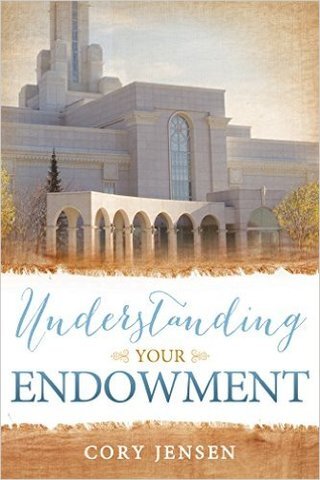Editor's note: The following article originally ran on LDS Living in September 2015.
Have you ever found yourself distracted or bored in a temple session? Or maybe sensed that there is something more to it, but you aren’t quite getting it? If so, please know that you are not alone and that it doesn’t need to remain that way.
Coming to understand our endowment is a very personal and sacred journey that we each must make individually. Here are three things that may help you along your way.
1. Covenants are not simply two-way promises.
First, we need to better understand covenants. Ancient Israel never claimed to be the Lord’s “two-way promise” people. They were the Lord’s covenant people and understood covenants as a sacred, binding relationship. Our modern definition misses the point.
These covenant relationships could be made between two individuals or between an individual (or group) and the Lord. They were entered into through a formal ceremony that generally involved several specific steps, which are reflected in the modern temple endowment ceremony. Each of these steps was highly symbolic and held great meaning for the participants, but the central idea behind them was always that of combining or merging identities, or of two becoming one.
Our gospel ordinances are important because they permit us to enter into a covenant relationship with the Lord. The first ordinances of the gospel are intended to bring about our spiritual rebirth. We covenant with God at baptism. Later, the temple ordinances are given to further our spiritual growth and maturity and to deepen our covenant relationship with the Lord. Recognize that when you left the temple on the day you were endowed, you left with promises from the Lord directly to you. Not promises made to some ancient prophet or people, but promises made to you. We need to
2. We all need some help along the way.
Wherever you are in your journey, there is still more to learn. Sometimes we feel we understand things better than we really do. That can be a barrier to learning more. We need to come to the temple with questions and eager to learn, as little children, because the temple has more to offer. I believe the Lord wants us to gain understanding and not remain in ignorance or content with “someday I’ll understand.” But getting there requires some work and effort on our part, as well as some help establishing a foundation for ourselves from which we can further build.
At times our progress may seem slow and maybe even discouraging. There may be divine purpose in that. Adam offered sacrifices for many days (probably years or decades) before an angel was sent to explain to him what he was doing (see Moses 5:6). Though it took faith for Adam to proceed without fully understanding, ultimately the Lord did not leave him in the dark. It is the same for us. We initially receive our ordinances in faith without perfect understanding, but as we move forward, the Lord can give us comprehension.
► You'll also like: President Packer: Most Latter-day Saints Misunderstand What the New and Everlasting Covenant Actually Is
Part of our barrier to understanding is that the endowment ceremony is highly ritualistic and symbolic. This is somewhat foreign in our modern world and not something we are readily familiar with. For this reason, we need some help, especially at the beginning. We need to do a better job of preparing our youth and ourselves for this sacred experience.
In the endowment, we are presented with simple symbols, like those found in Lehi’s dream. Lehi’s dream comprises one chapter in the Book of Mormon (see 1 Nephi 8). Lehi interpreted these symbols as they related to his family. Beyond his explanation, however, the symbols held additional meaning as we discover when Nephi asked for and received further explanation. Nephi’s vision covered much of the Savior’s life and the history of the world, scenes different from those Lehi outlined. And yet Nephi testified that he saw the same things his father saw (1 Nephi 11:3; 14:29). The answer is that the symbols of Lehi’s dream contained both interpretations. The endowment works in a similar way and contains layer upon layer of meaning, which when properly understood, can function as a Liahona in our lives.
3. Your endowment is unique to you.
Finally, if you haven’t been to the temple for your own ordinances please prepare for that day. The best advice I could give someone before attending the first time is to simply relax and enjoy the wonderful outpouring of the Spirit. Parts of the experience will probably be different than you expect, but there will be someone to guide you and help you all along the way. Don’t worry about trying to remember or understand everything on your first visit—we can return over and over for that—but if you will prepare and go in faith, your endowment can be the spiritual highlight of your life to that point.
It is possible to understand the endowment and the messages the Lord has for us there. With some effort on our part, we can begin to see beyond the simple symbols to the mighty realities represented. Our understanding will grow over time. Part of the beauty of the symbolism of the Lord’s House is that He can personalize the message to our own unique life and our stage of development. It is, at once, both universal and very individual.
► You'll also like: 10 Ways to Get More from Your Temple Experience
I often ask young men and women if they have ever thought about why the Lord wants them to be endowed before embarking on their missionary service. Many times they simply accept it as their next step but haven’t given it much thought. We find an answer to this question in D&C 109. This section contains the dedicatory prayer of the Kirtland temple. Joseph Smith didn’t write this prayer. He received it by revelation. If you study it carefully it teaches many of the Lord’s purposes for temple ordinances.
It states, “And we ask thee, Holy Father, that thy servants may go forth from this house armed with thy power, and that thy name may be upon them, and thy glory round about them, and thine angels have charge over them; And from this place they may bear exceedingly great and glorious tidings, in truth, unto the ends of the earth” (D&C 109:22-23).
I testify of the blessings of preparing for and attending the temple. Attending weekly has blessed my life more than I can describe. It has improved and strengthened my marriage and family and made me a better person. Some of the most spiritual moments of my life have been within temple walls. The Lord has given me great peace there even in the midst of life’s raging storms.
Ultimately almost all of our activities in the Church lead to the temple. The temple’s purpose is to bring us unto Christ so that we might be redeemed. The endowment contains a more profound testimony of Christ and His gospel than perhaps can be found anywhere else, if we take the time to study and apply it.


